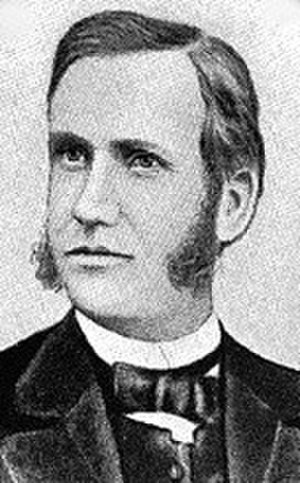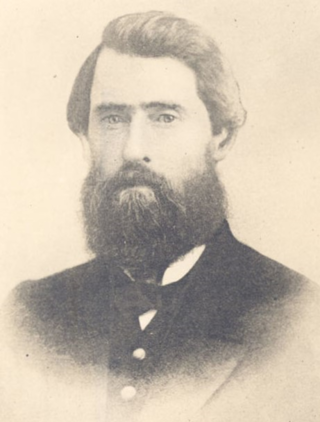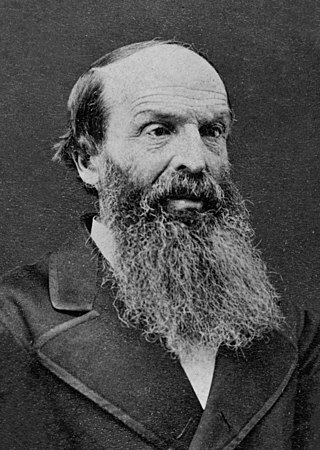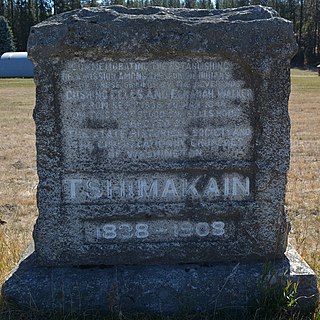Related Research Articles

The Cayuse are a Native American tribe in what is now the state of Oregon in the United States. The Cayuse tribe shares a reservation and government in northeastern Oregon with the Umatilla and the Walla Walla tribes as part of the Confederated Tribes of the Umatilla Indian Reservation. The reservation is located near Pendleton, Oregon, at the base of the Blue Mountains.
The Oregon missionaries were pioneers who settled in the Oregon Country of North America starting in the 1830s dedicated to bringing Christianity to local Native Americans. There had been missionary efforts prior to this, such as those sponsored by the Northwest Company with missionaries from the Church of England starting in 1819. The Foreign Mission movement was already 15 years underway by 1820, but it was difficult to find missionaries willing to go to Oregon, as many wanted to go to the east, to India or China. It was not until the 1830s, when a schoolmaster from Connecticut, Hall Jackson Kelley, created his "American Society for the Settlement of the Oregon Country," that more interest and support for Oregon missionaries grew. Around the same time, four Nez Perce arrived in St. Louis in the fall of 1831, with accounts differencing as to if these travelers were asking for “the book of life,” an idea used by Protestant missionaries, or if they asked for “Blackrobes,” meaning Jesuits, thus Catholic missionaries. Either way this inspired Christian missionaries to travel to the Oregon Territory. Oregon missionaries played a political role, as well as a religious one, as their missions established US political power in an area in which the Hudson’s Bay Company, operating under the British government, maintained a political interest in the Oregon country. Such missionaries had an influential impact on the early settlement of the region, establishing institutions that became the foundation of United States settlement of the Pacific Northwest.

Marcus Whitman was an American physician and missionary.

Jason Lee was a Canadian Methodist Episcopalian missionary and pioneer in the Pacific Northwest. He was born on a farm near Stanstead, Quebec.

The Whitman massacre was the killing of the Washington missionaries Marcus Whitman and his wife Narcissa, along with eleven others, on November 29, 1847. They were killed by members of the Cayuse tribe who accused Whitman of having poisoned 200 Cayuse in his medical care. The incident began the Cayuse War. It took place in southeastern Washington near Walla Walla and was one of the most notorious episodes in the U.S. settlement of the Pacific Northwest. Whitman had helped lead the first wagon train to cross Oregon's Blue Mountains and reach the Columbia River via the Oregon Trail, and this incident was the climax of several years of complex interaction between him and the local Native Americans. The story of the massacre shocked the United States Congress into action concerning the future territorial status of the Oregon Country. The Oregon Territory was established on August 14, 1848.
The Cayuse War was an armed conflict that took place in the Northwestern United States from 1847 to 1855 between the Cayuse people of the region and the United States Government and local American settlers. Caused in part by the influx of disease and settlers to the region, the immediate start of the conflict occurred in 1847 when the Whitman Massacre took place at the Whitman Mission near present-day Walla Walla, Washington when fourteen people were killed in and around the mission. Over the next few years the Provisional Government of Oregon and later the United States Army battled the Native Americans east of the Cascades. This was the first of several wars between the Native Americans and American settlers in that region that would lead to the negotiations between the United States and Native Americans of the Columbia Plateau, creating a number of Indian reservations.

Whitman Mission National Historic Site is a United States National Historic Site located just west of Walla Walla, Washington, at the site of the former Whitman Mission at Waiilatpu. On November 29, 1847, Dr. Marcus Whitman, his wife Narcissa Whitman, and 11 others were slain by Native Americans of the Cayuse. The site commemorates the Whitmans, their role in establishing the Oregon Trail, and the challenges encountered when two cultures meet.

Henry Harmon Spalding (1803–1874), and his wife Eliza Hart Spalding (1807–1851) were prominent Presbyterian missionaries and educators working primarily with the Nez Perce in the U.S. Pacific Northwest. The Spaldings and their fellow missionaries were among the earliest Americans to travel across the western plains, through the Rocky Mountains and into the lands of the Pacific Northwest to their religious missions in what would become the states of Idaho and Washington. Their missionary party of five, including Marcus Whitman and his wife Narcissa and William H. Gray, joined with a group of fur traders to create the first wagon train along the Oregon Trail.

Tiloukaikt was a Native American leader of the Cayuse tribe in the northwestern United States. He was involved in the Whitman Massacre and was a primary leader during the subsequent Cayuse War.

Narcissa Prentiss Whitman was an American missionary in the Oregon Country of what would become the state of Washington. On their way to found the Protestant Whitman Mission in 1836 with her husband, Marcus, near modern-day Walla Walla, Washington, she and Eliza Hart Spalding became the first documented European-American women to cross the Rocky Mountains.

François Norbert Blanchet was a French Canadian-born missionary priest and prelate of the Catholic Church who was instrumental in establishing the Catholic Church presence in the Pacific Northwest. He was one of the first Catholic priests to arrive in what was then known as the Oregon Country and subsequently became the first bishop and archbishop of the Archdiocese of Oregon City.

Piupiumaksmaks was head chief of the Walla Walla tribe and son to the preceding chief Tumatapum. His name meant Yellow Bird, but it was often mistranslated as Yellow Serpent by Europeans.

The Sager orphans were the children of Henry and Naomi Sager. In April 1844 the Sager family took part in the great westward migration and started their journey along the Oregon Trail. During it, both Henry and Naomi died and left their seven children orphaned. Later adopted by Marcus and Narcissa Whitman, missionaries in what is now Washington, they were orphaned a second time, when both their new parents, as well as brothers John and Francis Sager, were killed during the Whitman massacre in November 1847. About 1860 Catherine, the oldest daughter, wrote a first-hand account of their journey across the plains and their life with the Whitmans. Today it is regarded as one of the most authentic accounts of the American westward migration.
The Methodist Mission was the Methodist Episcopal Church's 19th-century conversion efforts in the Pacific Northwest. Local Indigenous cultures were introduced to western culture and Christianity. Superintendent Jason Lee was the principal leader for almost a decade. It was a political and religious effort. Two years after the mission began, the church's Board of Foreign Missions described its intent to reclaim "these wandering savages, who are in a very degraded state, to the blessings of Christianity and civilized life." Alongside the missions founded in the region were several secular operations opened. These were maintained to allow for material independence from the Hudson's Bay Company (HBC), then the preeminent economic entity in the region among European descendants.

Augustin Magloire Alexandre Blanchet was a French Canadian prelate of the Roman Catholic Church. He served as the first bishop of the now-defunct Diocese of Walla Walla and of the Diocese of Nesqually in present-day Washington State.

Egidius Jünger, also spelled AegidiusJünger, was a German-born prelate of the Roman Catholic Church. He served as bishop of the Diocese of Nesqually in the Washington Territory in the United States from 1879 until his death in 1895.

The Tshimakain Mission started in September 1838, with the arrival of Congregationalist missionaries Cushing and Myra Fairbanks Eells and Elkanah and Mary Richardson Walker to the area along Chamokane Creek at the community of Ford, Washington. Fort Colvile Chief Factor Archibald McDonald recommended the area to Eells and Walker on their first visit to the area.
Pierre Chrysologue Pambrun was a French Canadian militia officer and later a fur trader in the service of the Hudson's Bay Company. Pambrun fought against the United States in the War of 1812, in particular the Battle of the Châteauguay. He joined the HBC during a time of turmoil with its competitors, the North West Company. After the Battle of Seven Oaks, he was among those held captive by men employed by the NWC.

Cushing Eells was an American Congregational church missionary, farmer and teacher on the Pacific coast of America in what are now the states of Oregon and Washington. His first mission in Washington State was unsuccessful. Eells and his family had to leave after the Native Americans massacred a group of neighboring missionaries. They spent the next fourteen years farming and teaching in Oregon, before returning to Washington, where Eells founded a seminary that later became the Whitman College. Eells continued to teach and preach in Washington for the remainder of his life.
The Walla Walla expeditions were two movements of Indigenous people from the Columbian Plateau to Alta California during the mid-nineteenth century. The original expedition was organized to gain sizable populations of cattle for native peoples that lived on Columbian Plateau. Among the prominent members was Walla Walla leader Piupiumaksmaks, his son Toayahnu, Garry of the Spokanes and Cayuse headman Tawatoy. The first expedition arrived at New Helvetia in 1844.
References
- ↑ Blanchet, Francis Norbert Historical sketches of the Catholic Church in Oregon Portland, OR: 1878, p. 35.
- 1 2 Whitman, Marcus. To Rev. Walker: December 27, 1839. Whitman Mission. December 27, 1839. Accessed September 17, 2015.
- ↑ Whitman, Marcus. To Rev. Greene: March 27, 1840. Whitman Mission. March 27, 1840. Accessed September 17, 2015.
- ↑ The Oregon Spectator (Oregon City, OR), 6 October 1853, p. 2.